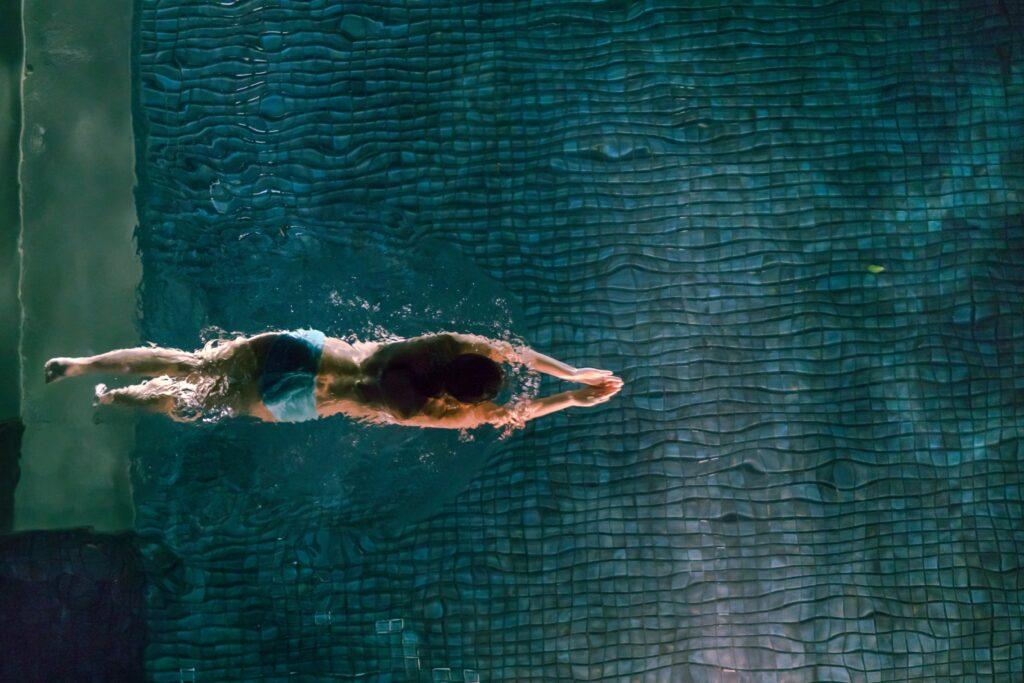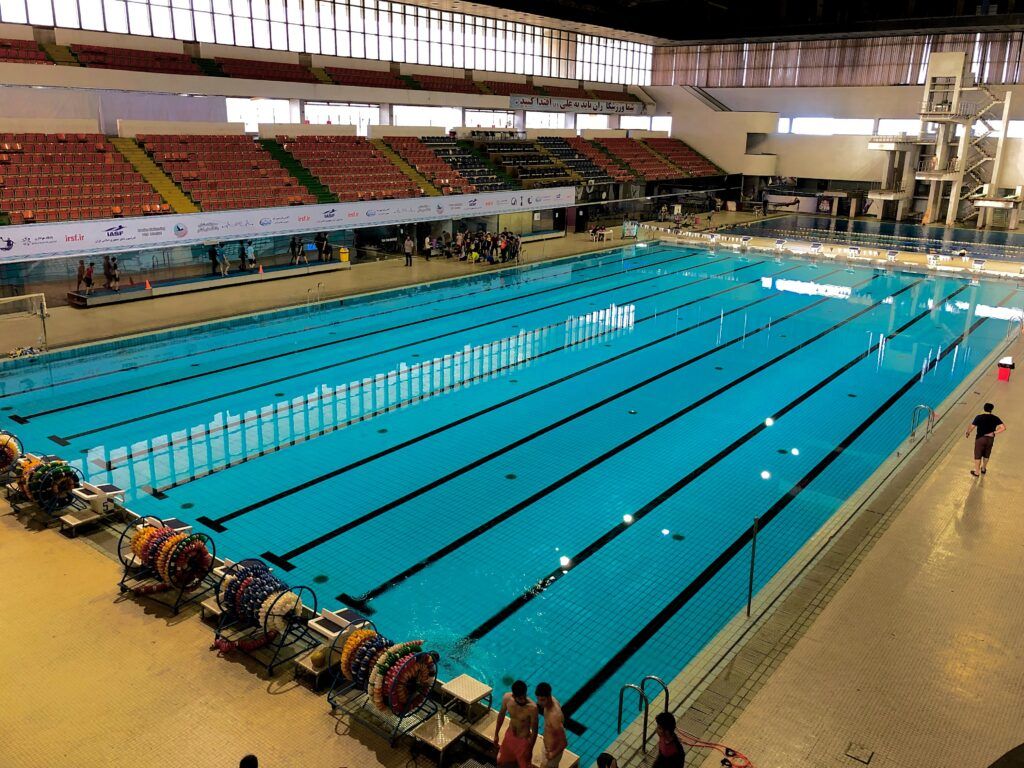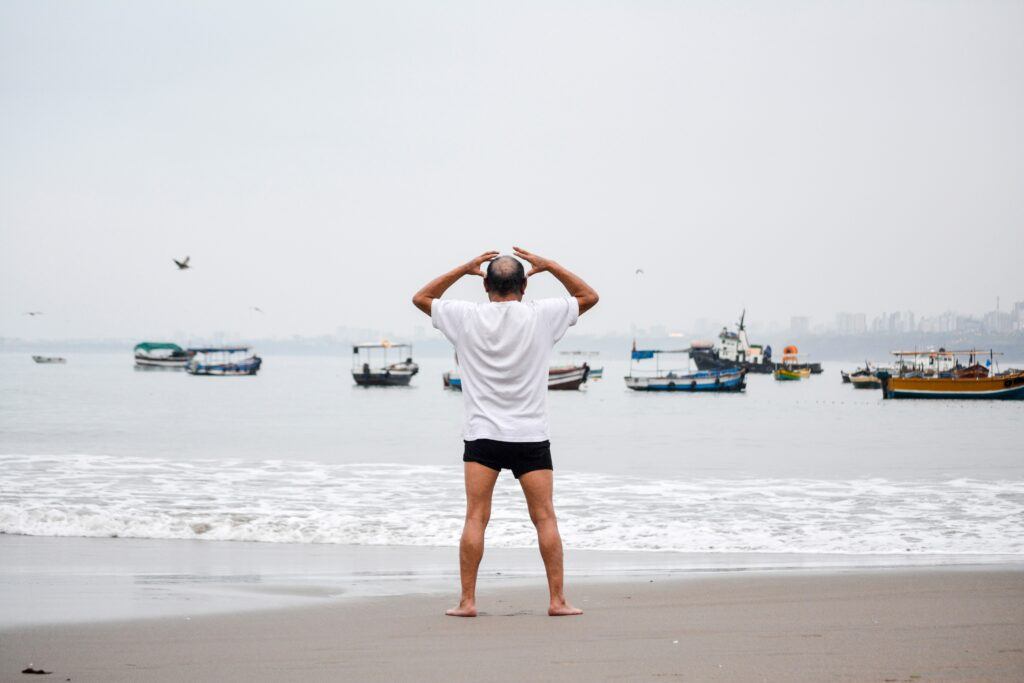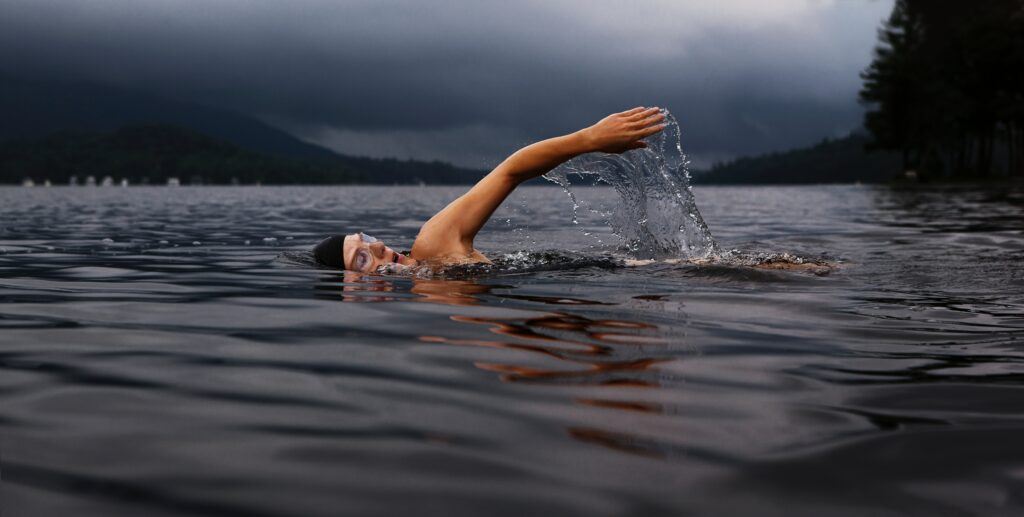“Learning Swimming Strokes | The Methods I Have Taught” shows swimming as an art and necessary life skill to have. It’s exciting and gets better with practice.
As a lifeguard and swimming instructor, I have taught all the basic strokes in addition to advanced ones. Find a style you’re comfortable with or interchange them during your swimming routine.

A Little History Lesson | Swimming
References have been made to swimming for as long as mankind can remember. Books have been written, illustrations have been found from ancient times.
Old-fashioned swim aids, such as animals’ bladder and cork for floating, were also discovered.
Competitions have also been popular for many centuries. Indoor pools were built to hold these events and for swimming in general.
Then came the Olympics in 1896! Only males were included at that time, but in most recent years, women have become unstoppable.
Swimming is known to involve all the muscles of the body. This makes it highly beneficial for circulation and therapeutic for different ailments.

Warming Up | Before Swimming
Every sport has a warm-up exercise before beginning; swimming is no exception. This allows the muscles and joints to slowly warm up before the more rigorous swimming exercise.
These include arms, shoulders, and legs, which can be done for a few minutes. They should not be too strenuous to get you tired, nor cause pain.
Some basic ones are raising and lowering the arms, rotating the shoulders, swinging the legs, and bending in different directions.
Now it’s time to head out to sea.

Let’s Begin | The Crawl and Breaststroke
These are the most common …
The Crawl: This was sometimes referred to as freestyle. Each arm is raised straight in front of you along the side of your head simultaneously.
You can choose to rotate your head to one side as you raise that arm, then switch to the other side at your convenience. An alternative is to breathe after a few breaths. Whatever is comfortable for you.
The head can be kept down if you’re wearing goggles and a snorkel for breathing.
The legs are kept straight with the feet doing a one-two, one-two “doggy paddle” rhythm. This will take practice to master.
Breaststroke: This is a beginner’s delight. It is more relaxing and easier to perform. The arms and legs are moved in a similar pattern.
From a belly-down position, the head is lowered into the water. The palms are placed together in front of your face with fingers closed. Push them forward, rotate them until the back of the hands touch each other.
A good starting point is pushing off with your feet on the sand or from a jetty or diving board with your hands in position.
The head is raised from the water for breathing and lowered simultaneously. It is raised when the arms are alongside the body and lowered to meet the hands before they separate again.
If you’re wearing goggles and a snorkel, you can keep your head down.
Keep fingers together and push hands and arms apart, bringing them down to touch your upper legs. In the meantime, the legs are drawn up with knees touching. They are then pushed away sideways while straightening the legs.
This takes practice to keep the rhythm going.
Up Next | Butterfly and Backstroke
Butterfly: The butterfly stroke takes a lot of energy and produces the most splash! To start, position yourself as with the breaststroke. Keep your fingers closed and hands together before rotating them to push out.
The arms will be pushed out sideways alongside your body, then exit the water. They are then thrown over to reenter the water and continue the procedure.
The knees are slightly bent with feet together, pointing downwards, and ankles relaxed. Kick downwards as the knees straighten before repositioning. This propels the body forward together with the hand movements.
Inhale while the head is up; exhale while in the water. Perfect this stroke by practicing.
Backstroke: It is similar to the crawl, except it is performed face up. Synchronization of arms and legs are important. Speed is dependent mainly on the arms propelling the body. The kicking motion of the feet helps to balance the body.
If you can master any one of these strokes with a lot of practice, you are well on your way to more advanced techniques, if you choose. You may want to train as a lifeguard, swimming instructor, or be certified in other rescue-related areas.
On the competitive side, you can train at different levels all the way to the Olympics!

Which Style is Yours? | Pick and Choose
It could be one or the other or all, but usually you will have a preferred style. Some people like a more easy-going and relaxed style. Others are more concerned about speed, getting to their destination in record time.
Some like to show off for their spectators, while others will mix it up for convenience. So, your preference will depend on what you want to achieve.
Comfort, safety, and purpose are influencers in choosing your style.

Let’s Recap | Swimming Strokes
The art of swimming has been known since the beginning of time. Swimming has been mentioned in every era. Some parts of the world offer more opportunities, especially if it is close to the ocean.
A warm-up routine is a good place to start before heading out to sea. It is beneficial, allowing your body to be more prepared for the swimming activity.
We looked at four of the basic swimming techniques … the crawl, breaststroke, butterfly, and backstroke.
You can practice all of them or choose the one(s) you’re more comfortable with.
Can you Swim? Which is your preferred style? Please let us know.
If you have questions or comments, please feel free to leave them below. I will be more than happy to address them.
This article, “Learning Swimming Strokes | Here Are the Methods I Have Taught” has been prepared on behalf of Hector Campbell.
Veron Lee Campbell | Entrepreneur | The Way 4WordEnterprises
Nicely written and very informative, Aunty!
I enjoy freestyle swim the most, but do love a leisure backstroke while meditating in the ocean.
Great read!
Hi Hyeisha:
Thank you for sharing! Swimming is such a freeing and relaxing recreational activity. It’s also a great way to exercise. Much love!